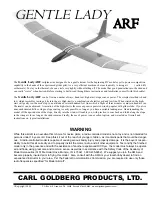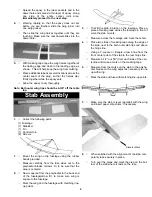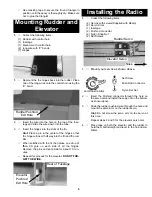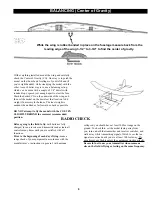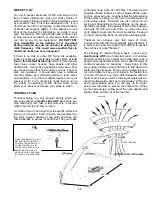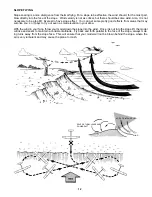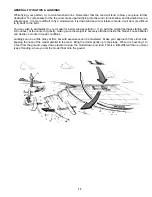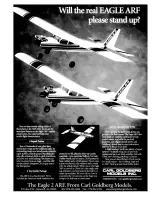
11
WHERE TO FLY
Fly only in areas sanctioned for R/C and known to be
free of radio interference. Ask your hobby dealer or
other modelers if there is an R/C flying field that is used
by a local R/C club. This is the ideal place to fly. If you
don't know of an R/C club nearby, contact the Academy
of Model Aeronautics (AMA), at the address on the
front of this booklet, for information on a club in your
area. Remember: R/C flying fields need to have rules
to help prevent accidents, so ask about them before
you turn on any of your equipment!
DO NOT TEST
your transmitter in the parking lot or anywhere
nearby until you are sure no one else is using your
radio frequency. This could cause another flyer to
crash and make you very unpopular!
If there is no club or other R/C flying site available,
locate a square area (preferably a grassy field), at least
four or five football fields long
, which is free of power
lines, trees, poles, houses, busy streets and other
obstructions. It must be at least three miles away from
any areas where other R/C models, such as boats or
cars, are operated. It should also have a relatively
smooth surface, as it will take practice to learn preci-
sion landings. If you find a suitable location, turn your
receiver on for 2 or 3 minutes to check that no one in
the vicinity is operating an R/C device which could
affect your receiver and cause your plane to crash.
a diameter of as much as 1000 feet. Thermals tend to
originate at fixed locations, such as plowed fields, park-
ing lots, or paved road - anywhere that the temperature
of the surface is likely to vary from the temperature of
surrounding areas. Thermals are also known to be
cyclic and, depending on the conditions, can be gener-
ated fairly regularly. It is appears that the time between
the hours of 10:00 a.m. and 2:00 p.m., when the sun is
at its highest angle, are the most productive. Keep all
of this in mind while flying at your particular flying site.
Thermals can achieve very fast rates of climb.
Coupling this fact with the potentially large diameter, it
is easy to see how one might find it difficult to escape
the clutches of a real "boomer."
The strategy for thermal flying is basic. Launch your
Gentle Lady ARF
via a high-start, winch, or hand-tow
and start searching for a thermal in areas likely to be a
good thermal generator. Watch your model for signs of
vertical movement or buoyancy. Keep flying in this
area, using a series of large flat turns to find where the
thermal is the strongest. Once you've located the cen-
ter, circle tighter to keep your model in the fastest rate
of climb. If there is any wind, drift downwind with the
thermal, but since you will be climbing and going down-
wind simultaneously, don't get carried away! With luck
and a good battery pack, you can stay up for hours,
using new thermals to extend your flight time. When
you've had enough, simply point the nose upwind and
slightly down and fly out of the thermal.
THERMAL FLYING
Thermal soaring is a very popular activity which you
can enjoy with your
Gentle Lady ARF
. But before you
start launching, let's take a few moments to discuss
what a thermal is and how to use it.
A column of warm air rising from the earth's surface is
known as a thermal. Such columns are generated by
the sun's uneven heating of the earth and they can
reach altitudes in excess of 4000 feet. They can have
RISING AIR
TYPICAL THERMAL
TOW RELEASE
800'-1000'
WHILE LEARNING TO FLY, YOU
MAY FEEL BETTER ABLE TO
CONTROL THE MODEL, AS IT
COMES TOWARD YOU, BY
FACING YOUR BODY IN THE
SAME DIRECTION AS THE
MODEL IS FLYING AND LOOK-
ING OVER YOUR SHOULDER.
Содержание Gentle Lady ARF
Страница 14: ......

